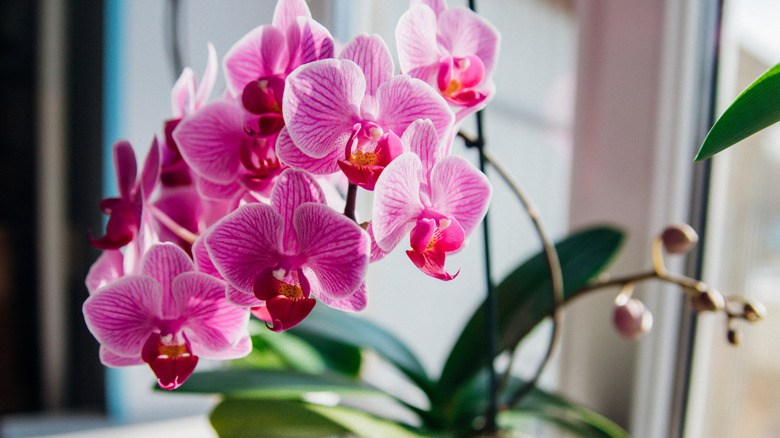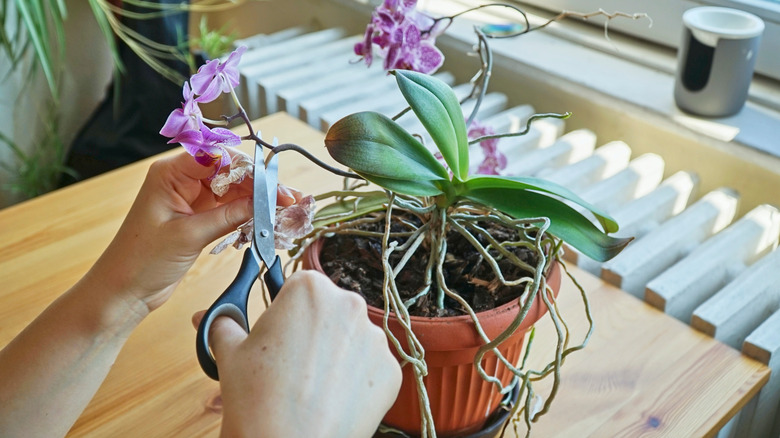Top Tips To Get Your Orchids Blooming More Frequently
Few houseplants can make a home feel like a tropical paradise quite like an orchid. One of the largest of all plant families on the planet (there are over 28,000 known species!), orchids are beloved by home horticulturists for their spectacular flowers. These blooms are as varied and unique as the pollinators they have evolved to attract.
Of course, once you've enjoyed one blooming orchid, you'll probably find yourself feeling eager for more before the last flower has even dropped. Depending on the species, you might be able to enjoy continuous blooms; others might only rebloom once a year. Either way, to ensure reblooming as frequently as possible, you'll need to provide conditions similar to the natural habitat of orchids. In particular, they'll need appropriate light, temperature, and nourishment.
Although there are plenty of care tips you can apply to orchids across the board — especially for the beginner-friendly Phalaenopsis, or moth orchids — it's a good idea to do a bit of research on the species-specific needs of your orchids when determining how to maintain indoor plants to maximize reblooming. Some species, such as cattleyas, only bloom when they experience changes in daylight hours. Temperature can also be more of an issue for certain species than others, such as cymbidiums, which will not flower if they get too warm.
The correct amount of light will make your orchids bloom more often
Lighting is particularly crucial for orchids to reach their full flowering potential; all too often, beginners will find that insufficient light is the culprit when their houseplants fail to bloom. Orchids need bright, indirect light, but don't trust your eyes to judge whether it's bright enough — trust your orchid's leaves! An orchid receiving adequate light will typically have bright grassy-green leaves, while an orchid that isn't receiving enough light will have dark green leaves. If your orchid's leaves have a yellow or red tint, the light may be too intense. Typically, an orchid can get the light it needs when it's placed in a window facing east or south, but if this doesn't seem to be doing the trick, you may need to provide artificial supplemental lighting.
If your orchids appear to be receiving optimal sunlight but still aren't showing any signs of budding, you may want to try taking them outdoors at night in the fall for a few weeks, preferably in temperatures between 55 and 65 degrees Fahrenheit. The seasonal nighttime temperature drop may encourage them to get the show on the road. Improper fertilization can also be holding your orchids back, especially during the active growing months of spring and summer — try a "weakly weekly" application of diluted balanced fertilizer (or make a home remedy for orchid fertilizer!). Make sure you don't get overzealous, as overfed plants will put out plenty of leaves, but fewer flowers.

